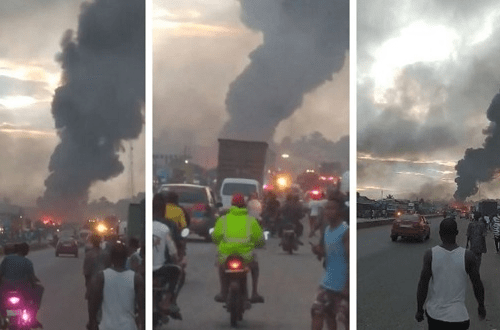
“We think that debt has to be seen from the standpoint of its origins. Debt’s origins come from colonialism’s origins. Those who lend us money are those who had colonised us before. Under its current form, that is imperialism-controlled, debt is a cleverly managed re-conquest of Africa, aiming at subjugating its growth and development through foreign rules. Thus, each one of us becomes the financial slave, which is to say a true slave.”
This is a quote from one of the famous speeches of the late Burkina Faso leader, Thomas Sankara. The speech was delivered at a summit of the then Organisation of African Unity (now the African Union) over three decades ago. Debt was a threat to the economic survival of African countries then as it is today.
From 1982 to 1990, African’s total debt ballooned from $140 billion to $270 billion, prompting the young Sankara who took over leadership amid the growing new form of imperialism to embark on a radical regional campaign against it. The young military leader lived a frugal life the same way he talked about it as the solution for a self-reliant Africa.
Unfortunately, Sankara was fell by a bullet, which according to testimonies, was ordered by the former Liberian President, Charles Taylor, with the active support of a web of international conspirators who were embarrassed by the activist leader’s ‘strange’ doctrine. About 34 years after he was assassinated, Africa is sinking in the morass of debt burden. The small countries procure more debts at the rate political leaders of regional leaders, including Nigeria, acquire luxury with the proceeds of mounting loans.
At the close of last year, Nigeria’s total debt profile stood at N32.9 trillion. This excludes the recently-approved ones and those awaiting disbursements. While the Federal Government’s share of the debt is N26.9 trillion, comprising N10.9 trillion external and N16 trillion domestic, the 36 states and FCT owes approximately N6 trillion, which is about five times their total 2020 internally-generated revenues (IGRs).
Nigeria’s public debt has grown by almost 100 per cent in five years. As of December 2016, the national debt was 17.4 trillion but grew steadily by N15.5 trillion in the intervening years, which expansion economists have described as unjustifiable.
“There is no substantial investment in the infrastructure to justify the rising debts. It only means that the government has continued to postpone the evil days,” Bala Zakka, an energy economist and financial expert said.
With the increase in appetite for a loan also comes to falter servicing. While the bills are huge, they still do not match the rate at which the debts are accumulated, perhaps because the government postpones the retirement of some of the facilities due for liquidation.

Last year, for instance, matured, federal bonds were refinanced as the government ran into a crisis and could not retire the notes. Ironically, the Minister of Finance, Budget and National Planning, Zainab Ahmed, disclosed that over 95 per cent of the total earnings for quarter one went into debt servicing.
As the year drew to a close, the Federal Government had spent N1.96 trillion servicing both external and domestic debts. The amount is about one-fifth of the total from federal government for the year. This year, the Federal Government will spend a quarter of its budget on debt servicing.
From 2016 till last year, an average of N1.6 trillion of the government’s revenue went into local debt servicing, bringing the total estimate spent in the five years to N9.7 trillion. The external debt component sucked $5.1 billion (or N1.9 trillion at the current exchange rate) in servicing.
States’ debts are also rising at a rate considered unhealthy for their fiscal stability. While their debt portfolios have grown substantially, the revenue mobilisation drives lags.
For instance, states’ IGRs slipped from N1.33 trillion in 2019 to N1.3 trillion last year. Yet, taxes account for over 80 per cent of money realised. Findings show that most of the states have failed to grow their revenue drives as previous loans were either misappropriated or used to pursue white elephant projects.
Debt, at state government levels has been a subject of blame game between sitting governors and their predecessors. And here are dozens of abandoned, unviable, or white elephant projects that were funded with debts incurred at huge costs by different state governments. The N60-billion Tinapa Free Trade Zone and Resort is a typical case of how ill-conceived projects left the state government with an unnecessary debt burden. After Donald Duke who initiated the project left office, his successor, Liyel Imoke said he inherited over 40 billion debt bills incurred on the account of the failed project.
State governments have been involved in unhealthy rivalry over airport development even when such facilities are unviable. Akwa Ibom, Delta, Bauchi, Jigawa, Kebbi and Taraba states, for instance, reportedly spent N20 billion, N37.01 billion, N7.9 billion, N15.5 billion, N17 billion and N17 billion respectively on airport projects which have little or nothing to add to their economies. Such was sourced from the debt market at stiff conditions. Akwa Ibom went further to float Ibom Airline Company in a brazen disregard for expert caution.
Also, the proposed Akwa Ibom Free Trade Zone has started generating the Tinapa sort of publicity in its heydays, The World Bank and the International Financial Cooperation (IFC), as usual, have shown interest in partnering with the promoters of the scheme, chief of which is the state government.
From Sokoto to Lagos, there is a Tinapa currently being funded with debts the creditors have no concrete plan on how they will be cleared. While a few of them may be well thought-out but lack the required cost-benefit analysis, the majority are merely ego-boosting. Rather than creating wealth-creating projects, the country ends up being filled with unusable monuments.
The state governments are not alone in this gambit. If the state chief executives are culpable in how to waste unavailable resources on unviable projects, the federal government is guiltier. The culture of public infrastructure debt-funding is almost as old as modern Nigeria except that it does not become a public debate until the government becomes too indulging to realize that debt is only one of the many financing options.
There have been many storms about the rail project, the choice of funding and the question about viability. Interestingly, the first documented Nigeria’s public foreign debt was incurred by the colonial administration in 1958 to finance the same Nigerian Railway Corporation (NRC). A modest $28 million was procured for rail projects, which was a major catalyst for growing the nascent economy in the days. In fairness to the colonial masters, the rail system became the most important public infrastructure it bequeathed Nigeria at Independence in 1960.
In the intervening years, the system benefited from the same missteps that set the post-Independence economy spiraling. The schools started losing shape owing to poor maintenance. And so were the rail facilities and other public infrastructure. It did not take long before the country realised that the rail system was a burden the federal government could not bear for long.
The current debt management approach is as droopy as ever. Both federal and state governments have continued to incur debts without the slightest regard for sustainability, experts including Prof. Pat Utomi and Godwin Owoh, a professor of applied economics, have warned. Whereas concerned stakeholders expect a retreat and gradual reduction of the burden, the figures rather increase at a disturbing rate.
Basic economic optimisation rules will advise you to cut costs if you cannot increase earnings. Unfortunately, Nigeria has been through the stage it currently is over and over again. Nobody wants to bite the bullet but go borrowing even when revenues go on a downward path. In the 1980s, the country borrowed to survive a revenue shortfall. In the 1990s, history repeated itself. In the past two decades, we have experienced a boom-and-bust-cycle more than three times. When the revenues are upswing, the authorities squander, and when the cycle bursts, they call the creditors.
The debt market is a dragnet all around. Whether one borrows from the domestic market or the drying international market, there are sufficient risks that could suffocate the already-bleeding economy to death and mortgage the future of the country. So, the decision on whether to go for an external or local loan is often a stand between the devil and the Red Sea. One only knows the depth of the sea after plunging in. And you do not have an idea how hurtful the devil’s embrace could be until you have gone to bed with him.
Currency volatility is a major concern when a country readily procures foreign loans like supermarket items. For instance, with the naira devalued by over 20 percent this year alone, the cost of the external debt incurred as of March this year has increased by the same proportion. All the dollar-denominated loans procured before the end of 2014 when the exchange rate moved from N150/$1, have ballooned by about 200 per cent based on currency revaluation alone. That has increased the burden of repayment.
It is not an easier decision to go for domestic debt neither. The crowding-out effect is mainstreaming into applied economics as a red light, especially for developing countries. When the public sectors habitually invade the domestic debt market to finance their activities, they inadvertently muscle out the private sector as the cost of borrowing becomes increasingly unbearable or unaffordable.
When that happens, private investments dry up and the job-creating capacity of the economy nosedives.


















